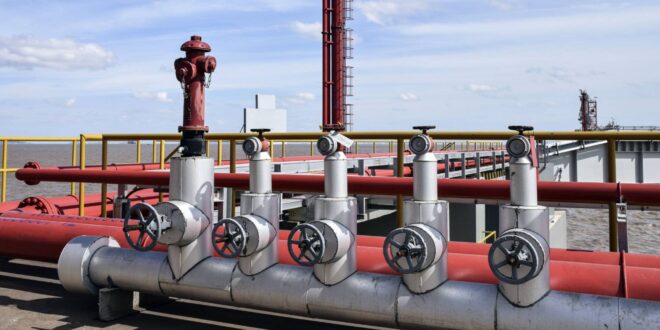Europe still contends with China for the title of top buyer of Gazprom PJSC’s pipeline gas, more than two years after Russia’s invasion of Ukraine slashed its western energy sales.
This situation reflects both the Kremlin’s successes and failures.
Even after many rounds of international sanctions, Russia still supplies substantial volumes of gas to select European countries — and the amount has actually increased so far this year. Yet Moscow hasn’t made any new deals to accelerate the growth of its sales to China beyond what was already mapped out prior to the collapse of its biggest export market.
Gazprom’s pipeline gas supplies to its few remaining clients in Europe reached 14.6 billion cubic meters from January to June, according to Bloomberg calculations based on flows via Ukraine and the TurkStream link. That’s sharply lower than the annual sales of some 130 billion to 175 billion cubic meters to the region seen before the invasion.
Yet it’s comparable to 15.2 billion cubic meters the Russian gas behemoth sent to China over the first half of this year, according to calculations based on China’s customs data and price estimates from the Russian economy ministry.
On a monthly basis so far in 2024, Europe and China have been taking turns as the largest buyer of Russian pipeline gas, the calculations show.
Since the invasion, most of the European Union sought out alternatives after Russia capped flows to the region in retaliation for its support for Kyiv. Norway now delivers 30% of the bloc’s gas, but for some countries including Austria, Hungary and Slovakia, Gazprom remains a critical and growing source of energy. Pipeline deliveries to the region were up more than 26% in the first half from a year earlier, according to Bloomberg’s calculations.
There is a risk to the continuation of these flows. Around half of the gas passes through Ukraine, with which Gazprom’s five-year transit agreement expires in December 2024. Kyiv has on numerous occasions said it will not extend the deal, but European officials are in talks to keep gas flowing through the country.
Pivot to China
Russia has for years said it plans to expand sales to China, but for the foreseeable future the Asian nation won’t get anywhere close to the pre-invasion size of Gazprom’s European market. Average prices are much lower for eastern exports.
Gazprom’s gas supplies to China via the Power of Siberia pipeline are set to reach the full annual capacity of 38 billion cubic meters in 2025, with a further 10 billion cubic meters per year available via the so-called Far Eastern route from 2027. The Kremlin has so far tried and failed to sign a third contract with China for a pipeline through Mongolia.

Valve control wheels are seen at ENN Energy Holdings Ltd.'s liquefied natural gas (LNG) terminal on Zhoushan Island, Zhejiang province, China, on Thursday, Nov. 1, 2018. Gas is in such hot demand in China right now its allowing a quirky market to flourish: transporting the fuel on trucks. The countrys top suppliers are loading liquefied natural gas onto tanker trucks and delivering it to users to make up for insufficient pipeline coverage inland. Photographer: Qilai Shen/Bloomberg
 Iran Energy News Oil, Gas, Petrochemical and Energy Field Specialized Channel
Iran Energy News Oil, Gas, Petrochemical and Energy Field Specialized Channel



